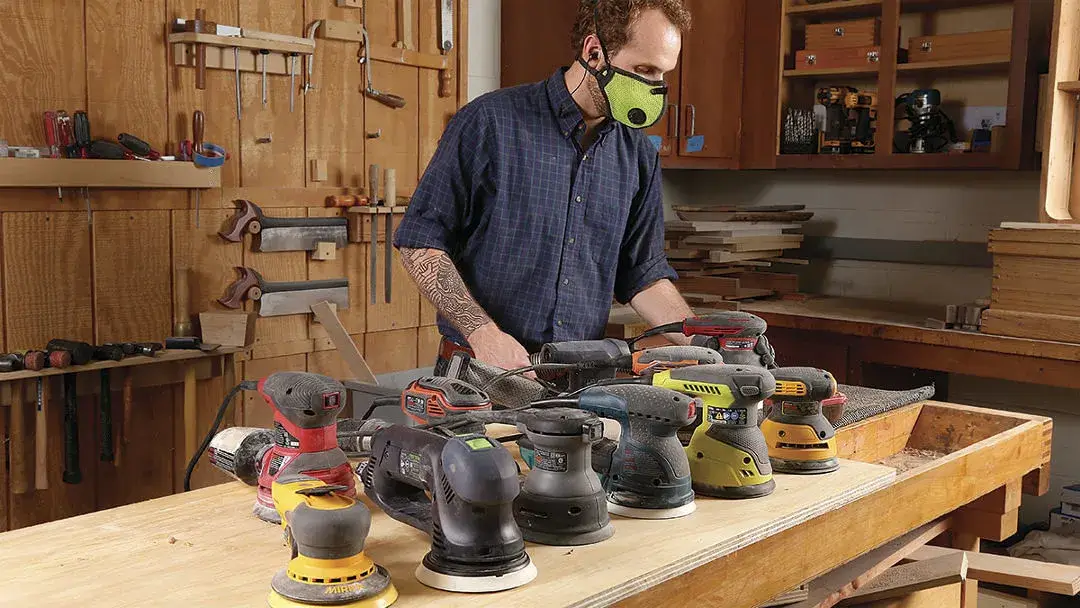If you are looking for a power tool that can smooth rough surfaces, remove paint, or polish wood, metal, or plastic, you might want to consider buying a sander. A sander is a device that uses abrasive materials, such as sandpaper, to rub against a surface and create a smooth finish. But how do you choose the right sander for your project? One of the factors that you need to consider is the power rating of the sander, which is measured in watts.
The Power Rating of a Sander
The power rating of a sander indicates how much electricity it consumes and how fast it can rotate the sanding pad or belt. Generally speaking, the higher the wattage, the more powerful and efficient the sander is. However, this does not mean that you should always go for the highest wattage available. There are other factors that affect the performance and suitability of a sander, such as the size, shape, speed, and type of the sanding surface, the material and condition of the workpiece, and the desired finish and quality of the result.
How to Choose the Right Wattage for Your Sander
There is no definitive answer to how many watts is a good sander, as different sanders are designed for different purposes and applications. However, here are some general guidelines that can help you narrow down your options:
- For light-duty tasks, such as sanding small or delicate items, or finishing fine details, you can use a sander with a low wattage, such as 150 to 200 watts. These sanders are usually compact, lightweight, and easy to maneuver, but they may not be very effective on hard or rough surfaces, or for removing large amounts of material.
- For medium-duty tasks, such as sanding furniture, cabinets, doors, or floors, or removing paint or varnish, you can use a sander with a moderate wattage, such as 250 to 400 watts. These sanders are more versatile and powerful than the low-wattage ones, but they may also be heavier, louder, and more expensive.
- For heavy-duty tasks, such as sanding large or thick workpieces, or smoothing concrete, stone, or metal, you can use a sander with a high wattage, such as 500 to 1000 watts. These sanders are the most powerful and efficient ones, but they may also be bulky, heavy, and difficult to control, and they may require more maintenance and care.
Other Factors to Consider When Buying a Sander
Besides the wattage, there are other factors that you should consider when buying a sander, such as:
- The type of the sander: There are different types of sanders, such as orbital sanders, belt sanders, random orbit sanders, detail sanders, and disc sanders, each with its own advantages and disadvantages. You should choose the type that suits your project and preference.
- The speed of the sander: The speed of the sander is measured in revolutions per minute (RPM) or orbits per minute (OPM), and it determines how fast the sanding surface moves. You should look for a sander that has a variable speed control, so that you can adjust the speed according to the material and the desired finish.
- The size and shape of the sanding surface: The size and shape of the sanding surface affect the coverage and accuracy of the sander. You should look for a sander that has a sanding surface that matches the shape and size of your workpiece, or that has interchangeable attachments for different shapes and sizes.
- The dust collection system: The dust collection system is an important feature that helps to keep your work area clean and reduce the health risks of inhaling dust particles. You should look for a sander that has a built-in dust bag or a port that can connect to a vacuum cleaner.
Conclusion
A sander is a useful power tool that can help you achieve a smooth and professional finish on your projects. However, to choose the right sander, you need to consider the power rating of the sander, as well as other factors, such as the type, speed, size, shape, and dust collection system of the sander. The power rating of a sander is measured in watts, and it indicates how much electricity it consumes and how fast it can rotate the sanding pad or belt. Generally, the higher the wattage, the more powerful and efficient the sander is, but you also need to consider the size, shape, speed, and type of the sanding surface, the material and condition of the workpiece, and the desired finish and quality of the result. There is no definitive answer to how many watts is a good sander, as different sanders are designed for different purposes and applications, but you can use the following guidelines to narrow down your options:
- For light-duty tasks, use a sander with a low wattage, such as 150 to 200 watts.
- For medium-duty tasks, use a sander with a moderate wattage, such as 250 to 400 watts.
- For heavy-duty tasks, use a sander with a high wattage, such as 500 to 1000 watts.
We hope that this article has helped you to understand how many watts is a good sander, and how to choose the right sander for your project. If you have any questions or comments, please feel free to contact us. Thank you for reading!




